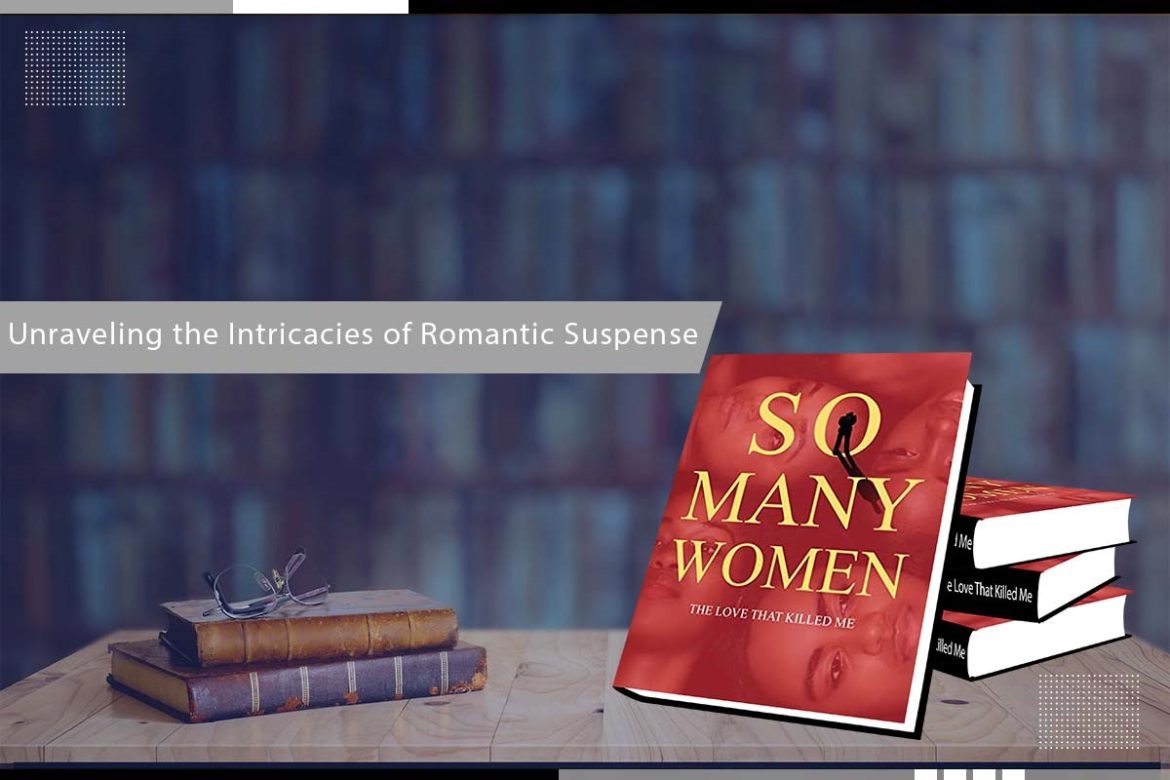A romantic suspense book is a romance genre-based novel with a gripping plot that mainly centers on a suspense, thriller, or mystery storyline. It’s an entirely distinct kind of love story that progresses in the background of a life-and-death crime scenario or possible crime situation. The risk factors are high on both the suspense and romance fronts. This often means that one or both of the main characters in the featured duo face life-threatening situations. This danger drives the story forward as they duel to unravel a crime or end a crime from occurring. Meanwhile, sparks ignite between the couple during their investigations to stop an imminent catastrophe. Thus romance is born.
As in any typical romance novel, there are obstacles in the couple’s path, usually the physical ones in a suspenseful love story. The characters often find it hard to indulge in romance when the antagonist tries to kill them. Yet, there are still psychological or emotional barriers that must be overcome to achieve a happily-ever-after ending. So, romantic suspense book series authors have the most crucial and delicate task of regulating these two people through not only the mystery, suspenseful, and thriller plot encounters but also through a personal minefield. Author Rose Curiel novel So Many Women is a perfect epitome of romance and suspense, which will take the readers on a journey of love along with mysteries and eerie dangers.
What Role Does The Antagonist Play in A Suspenseful Romance Novel?
You might have a triangle of characters in a tale that braids suspense, love, threats, sensuality, good and wicked, death, and life. Although many will debate that there is always an antagonist in every storyline, this particular character in a suspense novel is mainly the villain. If we talk about romantic suspense, the villain not only intimidates the lives of the antagonists, they signify and create a life-threatening situation for their love as well. Therefore, overcoming the story’s villain is particularly substantial. Creating the villains and their heinous traits is complex and challenging, and authors portray these details flawlessly in their best romantic suspense thriller novels.
When you start to write romantic suspense, you have to make the most critical decision: to disclose the identity of the anti-hero or not. This decision does have a significant impact on the story to reveal the identity or not to reveal but seemingly, both routes are correct. There are many enthralling best romantic thriller novels where you get familiarized from page one exactly who the villainous character is. However, you’re still on the edge of your seat in utter suspense, watching your hero and heroine decipher the villain’s schemes or fight him to the death. There are also great suspense love stories where you are given a cast of characters. While carefully reading, clues or fake clues wouldn’t provide a hint of information on who exactly the story’s villain is until you finish reading the end. When writers tend to write a romantic suspense novel, they need to develop a mindful decision to reveal or not reveal the villain’s identity. That particular decision will likely have a profound impact on the book. Many writers choose not to reveal the antagonist’s identity just because they intentionally like to maintain the high suspense factor for the readers.
Tips On How Novice Writers should construct their Supercharged Romantic Suspense Plots.
There are typically four elements of romance that requires perfect incorporation when writing a romantic suspense book series.
- The hero and heroine of the story ought to share time and space.
- They must be co-dependent, demanding each other to survive a mutual threat or to overcome a shared nemesis. Neither one contended about requiring the other’s help. They must be reluctant allies.
- Still, they romantically desire each other.
- But fate has something else stored for them; they are forbidden to each other. Something created into the plot that makes it difficult for them to surrender to their desires
Coming to the part of the suspense, writers tend to create a question in the reader’s mind early on in the story, if not in the first sentence, then by the end of the prologue of the first chapter. They continue to harbor thoughts and questions for readers who aren’t even aware of the questions. This makes the story even more compelling for the readers till they finish reading the end and finally figure out the ambiguities of the suspense.

